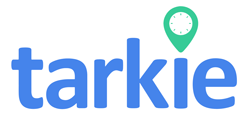Do you know how your leave management affects your employees and your profits? Small and Medium Enterprises (SMEs) in the Philippines need to focus on leave optimization. A good leave policy boosts employee happiness and keeps them from leaving. It also makes sure you follow the law.
By managing leave well, companies can cut down on missed work days. This keeps the workplace happy and productive. This article will show you how to manage leave to help your business succeed.
Key Takeaways
- Effective leave management can increase employee engagement by up to 30%.
- Structured leave systems can reduce absenteeism by 25%.
- About 60% of employees are more satisfied when their leave requests are handled fairly.
- Companies prioritizing employee well-being see a 20% rise in retention rates.
- Adhering to labor laws can prevent fines averaging around ₱570,000 per violation.
Understanding Leave Management
Leave management is about handling employee time-off requests fairly and clearly. For small and medium enterprises (SMEs) in the Philippines, a good leave policy is key. It helps track leave types like vacation, sick leave, and parental leave accurately.
A good leave management system does more than just keep records. It makes employees happy and helps balance work and personal life. Knowing their leave rights, employees can plan better, reducing work disruptions. This also stops misunderstandings and boosts team morale.
The table below shows common leave types and what makes a leave management system effective:
| Leave Type | Carry Forward Policy | Annual Usage Recommendation |
|---|---|---|
| Earned Leave | Can be carried forward & accumulated | Encourage utilization every year to avoid burnout |
| Sick Leave | Lapses at end of year | Use as needed for health and recovery |
| Casual Leave | Lapses at end of year | Utilize for unforeseen personal matters |
Reports like the Leave Summary Report and Leave Transaction Report help HR and management. They keep things in line with labor laws and answer employee questions quickly. This avoids dissatisfaction. Integrating leave management with payroll systems makes HR work easier and keeps data accurate.

Types of Leave Offered in the Workplace
Companies offer different types of leave to meet their employees’ needs. Knowing about these options is key. They greatly affect how happy and healthy employees are. Some common types of leave include:
- Vacation Leave: Gives employees time off for fun or to relax.
- Sick Leave: Helps employees take time off when they’re sick, so they can heal without worrying about money.
- Parental Leave: Supports new parents, helping them bond with their child.
- Personal Leave: Allows employees to take time off for personal reasons, without having to explain why.
- Emergency Leave: Provides immediate time off for unexpected situations, showing the value of flexibility.
Guidelines for paid time off are crucial. They help employees know what they’re entitled to. Clear rules build trust and improve work relationships.
Having various leave options can make employees happier. Companies that support their workers show they care. This leads to a better work environment. Managing leave well boosts confidence and strengthens the company culture.

The Importance of Leave Optimization
Leave optimization is key to making work better for everyone. It helps companies run smoothly and keeps employees happy. A good leave policy means less disruption and more work done.
Tracking who’s in and who’s out is crucial for payroll. Using automated systems cuts down on mistakes. This makes managing the team easier and keeps everyone on track.
Today’s workplaces need to handle many types of leave. This includes sick days, vacation, personal time, and parental leave. Each has its own rules, so a solid HR plan is a must. Real-time tracking helps keep things in line with the law.
Good leave policies also help employees balance work and life. This leads to happier, more loyal staff. Using tech for leave requests makes things fair and easy for HR.
| Benefits of Leave Optimization | Impact on HR Compliance |
|---|---|
| Reduces administrative workload | Minimizes legal risks |
| Enhances employee morale | Improves adherence to labor laws |
| Increases productivity | Ensures accurate record-keeping |
| Facilitates better communication | Avoids penalties for non-compliance |
Companies that focus on leave optimization do well in many areas. They follow the rules and make their workplaces better. This leads to a happy team and growth for the company.
Legal Requirements for Leave Management
It’s crucial for businesses in the Philippines to know the legal requirements for leave management. Laws cover different types of leave, like bereavement and maternity leave. This ensures employees get the benefits they are entitled to. Companies must make sure their leave policies match these FMLA regulations and paid time off laws to stay compliant.
For companies with over 50 employees, the Family and Medical Leave Act requires up to 12 weeks of unpaid leave for eligible employees. Following these legal requirements protects employees and helps companies avoid big fines.These fines can be between ₱57,000 and ₱570,000 for each violation.
A good leave management system can make things easier and reduce work for HR. It lets them focus on important tasks while keeping everything legal. Good leave management also boosts productivity and makes employees happier. Studies show that clear leave policies can cut down on absences and improve morale.
Businesses should use systems that collect data in real-time. This helps make better decisions about staffing and scheduling. Companies that focus on legal leave management create a fair work environment. This leads to better productivity overall.

Effective Attendance Management Strategies
Keeping employees on track is key for any business. In the Philippines, using the right tools for tracking absences and time off helps a lot. This way, businesses can handle absences better and plan their workforce more effectively.
A good attendance system boosts productivity and follows labor laws. It also makes payroll easier. By checking attendance regularly, businesses can spot trends and act fast. For example, a points system helps track absences and solve them quickly.
Flexible work hours can ease stress and boost attendance. Keeping an eye on unused leave is also important. It stops last-minute requests that can mess up leave plans. Tools that analyze attendance by department help understand how it affects work.
Businesses must follow labor laws to avoid legal issues. Updating attendance policies helps keep things smooth. Asking employees for feedback helps make policies better.
Old ways like paper timesheets can be wrong. Modern systems are more accurate and save money. They use biometrics and apps for remote workers, giving a clear view of who’s in and who’s not.
With more people working from home, flexible attendance is more important. About 60% of companies now offer flexible hours. Integrating attendance with payroll and HR makes things more efficient. Predictive analytics can also make planning the workforce 40% better.
| Attendance Strategy | Benefit |
|---|---|
| Regular Attendance Reviews | Spot trends and address absenteeism |
| Points-Based System | Effectively address absentee action |
| Flexible Work Schedules | Prevent burnout and improve morale |
| Automated Attendance Solutions | Reduce costs and improve accuracy |
| Employee Surveys | Gather insights for policy adjustments |

Implementing a Leave Management System
Having a good leave management system is key for any company’s success. It makes the leave request process smoother and keeps everyone informed. Choosing the right software and making clear leave policies can make work better and happier for everyone.
Choosing the Right Software Solution
Finding the right software for leave management is very important. A good Leave Management System (LMS) makes it easy to ask for leave. It has features like dashboards, cloud access, and links to payroll. These systems keep track of leave and follow the law.
When picking a software, think about:
- How easy it is to use
- Having all leave requests in one place
- Automatically updating leave balances
- Keeping employee data safe
Establishing Clear Leave Policies
It’s important to have clear leave policies to avoid confusion. These policies should cover different types of leave, how leave is earned, and how to ask for time off. Clear policies help everyone understand their leave options.
| Policy Feature | Description |
|---|---|
| Types of Leave | A breakdown of sick leave, vacation leave, and public holidays. |
| Accrual Rates | Information on how leave is accrued and utilized. |
| Request Procedure | Steps for submitting leave requests and notification obligations. |
| Approval Process | Details on who approves requests and typical timeframes. |
Having clear leave policies makes employees happier and less stressed. Using the right software and policies can make leave management better. This helps the whole company do well.
Monitoring and Reporting Leave Data
It’s key for companies to track leave data well. This helps them understand how employees use their time off. Knowing this can help them plan better and use resources wisely.
Using advanced tools for tracking leave is a must. HR teams can spot trends and make sure leave is shared fairly. This makes sure everyone gets a fair chance to take time off, which boosts happiness and trust.
Looking at leave data often helps tackle absenteeism. By knowing why people are absent, companies can make work better for everyone. This approach not only helps employees but also makes sure leave is used well, keeping everyone motivated.
| Tracking Method | Description | Benefits |
|---|---|---|
| Automated Systems | Uses tech to keep track of who’s in and who’s out. | Less chance of mistakes and more accurate data. |
| Real-Time Reporting | Managers get leave data right away. | Helps spot and fix issues with being late or absent. |
| Employee Self-Service Portals | Employees can handle their leave online. | Makes things clearer and helps HR do less work. |
| Data Analytics | Looks at trends in leave and absences. | Helps find ways to boost work performance. |
Using these methods together gives a full picture of leave and attendance. Companies that focus on tracking and reporting well can build a great work culture. With the right tools and plans, they can handle leave management and follow the law.
How Leave Optimization Aligns with Company Needs
Leave optimization balances what employees need with what the company wants. This balance boosts productivity at work. A good leave policy helps companies follow the law and support their workers.
In the Philippines, small and medium businesses are using new leave management tools. These tools make it easier for employees to request time off. They also help HR teams work less and track absences better.
Companies that watch their data closely can use their resources better. This saves money on hiring temporary workers and overtime. Accurate records of who’s working when improve morale and reduce turnover.
By linking leave quotas to attendance systems, companies can adjust automatically. This makes sure everyone works well together. It also makes the workplace happier and more efficient.
In short, making leave work better for everyone is key. It boosts productivity, keeps HR rules, and creates a better work place. Businesses in the Philippines can thrive by focusing on these areas.
Conclusion
Improving your leave management system is key to boosting employee engagement and keeping work flowing smoothly. Knowing the different leave types, following legal rules, and using smart attendance management helps. This way, companies can create a strong leave process that meets both legal needs and business goals.
Using automated systems for leave management makes things easier. It helps manage vacation, sick, and parental leave well. This also cuts down on the hassle of manual processes. Companies can avoid big losses from time theft and absenteeism, which cost a lot each year.
Also, using technology, like integrating with payroll and HR systems, helps track attendance and leave accurately. By keeping an eye on these, companies can deal with too much absenteeism. This creates a supportive work environment that helps the company succeed.
